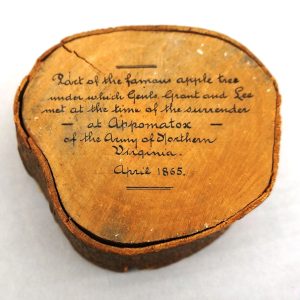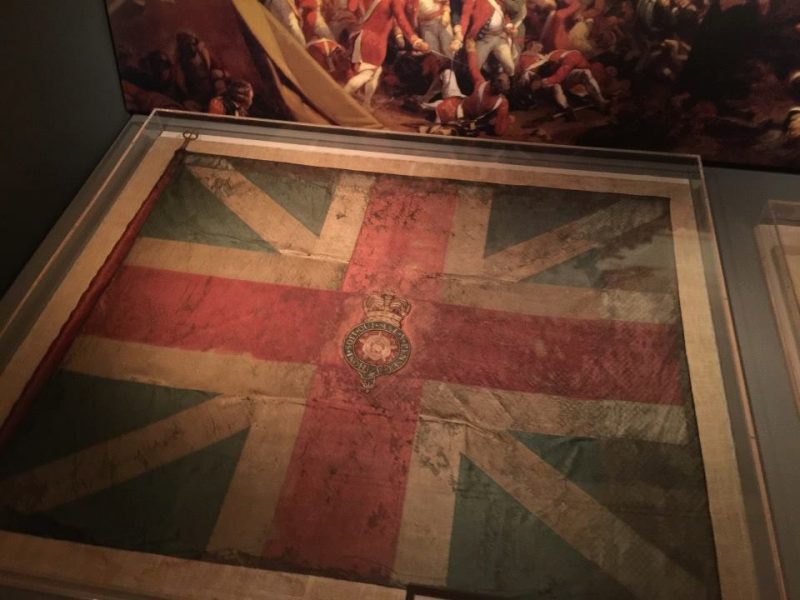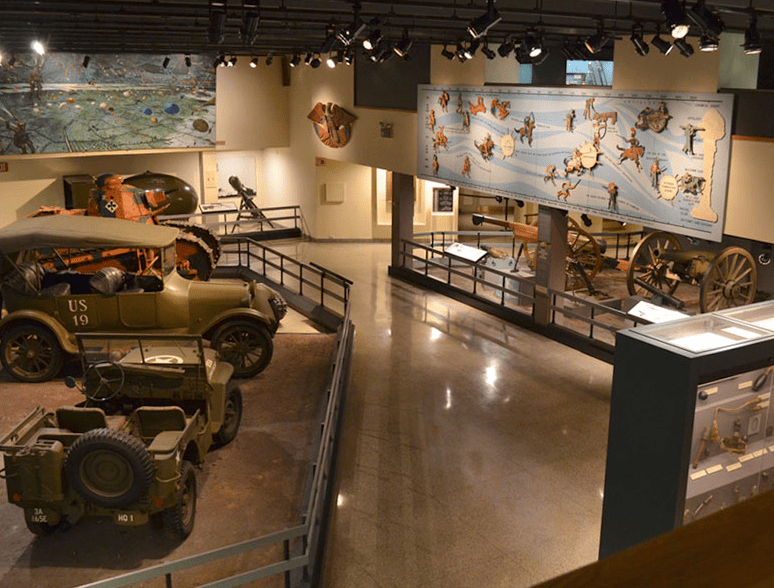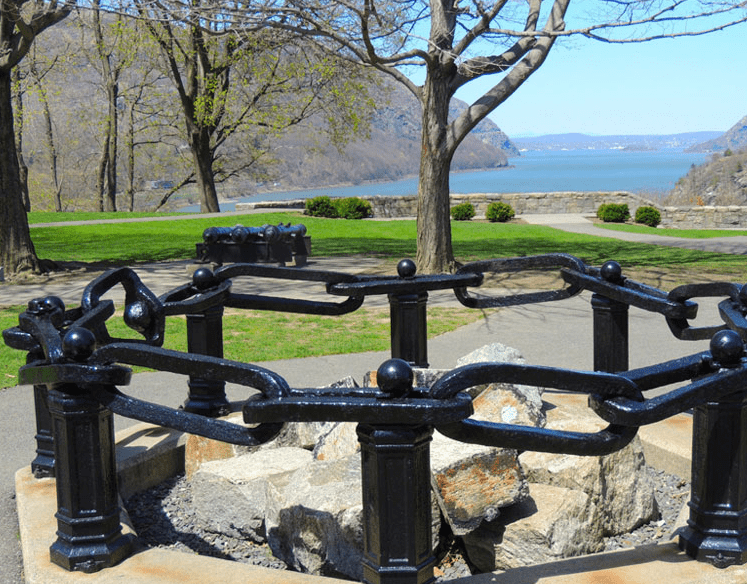
West Point, New York
Sitting atop a strategic point high up overlooking the Hudson River, West Point Military Academy commands quite a view. The Hudson River below flows in a gentle S-curve, making this location very desirable for a military fort during the Revolutionary War as the Continental Army aimed to prevent British ships from passing by into New York City, just 50 miles upstream. After the war, President Thomas Jefferson converted the fort into a military academy, an academy that continues to this day. The Academy has had a strong connection to the momentous times in American history – from the Revolution to modern day wars around the world. The list of famous names that are associated with West Point reads like a who’s who of American history: President Eisenhower, President Ulysses Grant, Robert E. Lee, Jefferson Davis, George Patton, Benedict Arnold, and even poet Edgar Allen Poe. As a result of such a long and illustrious history, the Academy has quite a story to tell, and an impressive museum to help tell it.
While some may think “I don’t like war” so why would I want to go to a military museum? You don’t have to be a soldier to appreciate items found in a military museum. Anyone who has an interest in history would be surprised and fascinated by what they find in the museum. There are stories to be heard that you’ll never find in your high school history textbook.
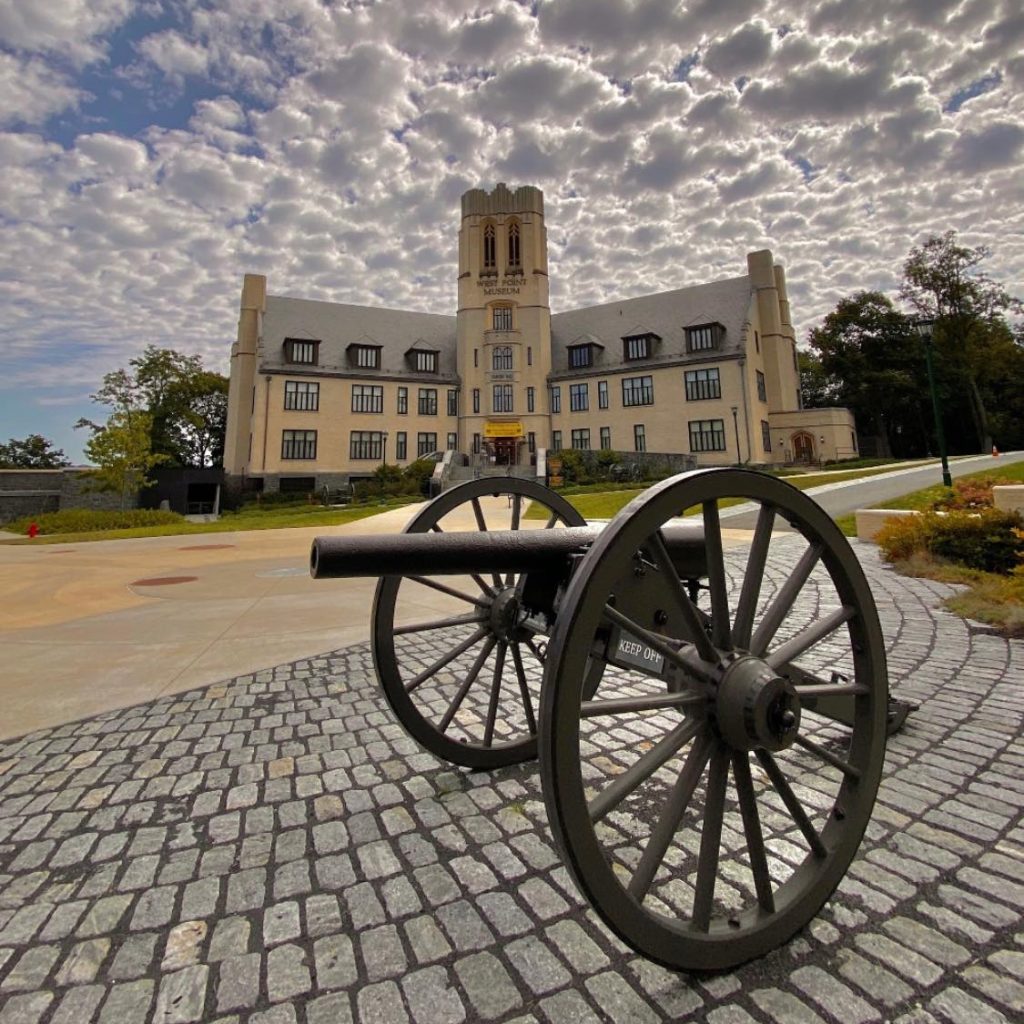
Stories that can turn all those dates you had to memorize for a test such as 1865 when General Lee surrendered to General Grant at Appomattox ending the Civil War into something much more memorable. The museum has many items on display regarding former students Lee and Grant and their head-to-head battle during the Civil War. Did you know that following the surrender at Appomattox, souvenir hunters were on the scene to take mementos away with them? They were so desperate for keepsakes (either for themselves or to sell) that they chopped down the cherry tree outside the courthouse, sliced it up into rings and took those home as their little piece of history.
The stories you’ll find in the museum include those attached to interesting objects from the history of war you’d never thought of before, including the knob that was pulled to release the atomic bomb on Nagaski, or a torpedo crafted from an old beer keg by the Confederates during the Civil Wari.The trophies of war include the British drum captured at the battle of Saratoga and the first British flag captured during the Revolutionary War.
Take a look at the original uniforms from centuries of soldiers both European and American and see how they have evolved over time. They can be incredibly ornate and look exceedingly uncomfortable, or look extremely realistic including the everyday mud-spattered fatigues worn in Vietnam. You can see items that belonged to illustrious members of history including George Washington’s pistols, the last message sent by George Custer at the Battle of Little Big Horn, a sword belonging to Napoleon, the dagger carried by Hermann Göring when he was captured, and even a gold-plated pistol that belonged to the world’s most hated man, Adolf Hitler.
You will find items from those that weren’t military as well including a silver-plated party book, signed by Charles Lindbergh, Herbert Hoover, and Mussolini, among others, as well as an impressive art collection which includes works by artists James Whistler and Fredrick Remington.
For those that are not familiar with weapons and tactics of war, a visit to the museum and just walking the grounds outside is a lesson – albeit in stunning surroundings. Plaques explain what you are seeing as you gaze out over the river to the island beyond. When you come across a heavy chain, painted black, and on display outside on the grounds, take a moment to stop and consider how the tactics of war have not really changed, just the tools used. In 1778, the Rebel forces needed to keep the British fleet from sailing into New York City. Several options were employed in different locations, including a “chevaux-de-frise” blockade of logs sunk underwater intended to pierce the underside of any passing ships. This method of blockades are still in use today during conflicts. At the S-curve in the river below West Point, ships naturally slowed to make the passage, creating a perfect opportunity to employ a different method of blockade. In 1778, a heavy chain was constructed of two-foot iron links, each weighing between 140-180 pounds. Using log rafts, the links were floated into position and joined to create a metal barrier stretched across the Hudson River anchored by log cribs filled with rocks. The chain had to be removed each winter and reinstalled each spring to avoid being damaged by winter ice. The tremendous amount of manual effort required to install and maintain this chain fence is astonishing, and was successful in deterring the fleet. A section of the chain is on display. While it might just look like an unusual decorative fence to some, it is a major link in the very existence of the United States of America.
Stand out on the grounds overlooking the Hudson River. Imagine the British fleet attempting to sail by under heavy cannon fire. What is a serene and scenic landscape now, was once a battlefield, as attested by the cannonballs on display inside the museum, removed from the ramparts of the fort.
“It could not stand on more appropriate ground,
and any ground more beautiful can hardly be.”
Charles Dickens, 1841
You can read more about the items on display on their website or their facebook page, but for the best experience, you need to visit in person. Sail today’s calm and scenic waters while learning of the Hudson River’s important part in forming our country’s history on a stop at West Point.
Hudson River Fall Foliage – American Independence
New York City, NY to Albany, NY
- 7 Nights
- October 6, 2025,October 13, 2025,October 20, 2025--
1 more date available. - From $5,870
- American Independence

